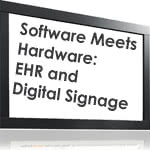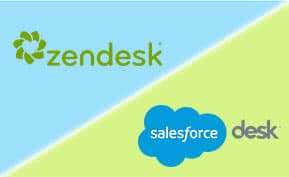Customer Service
Medical
Leveraging Digital Signage for Real Medical Service Improvement

Earlier in the week I was in a waiting room for a physician visit and as I sat there for much longer than I wanted, I kept wondering “what patient number am I and how many people will be seen before me?” Given that we are in the trailing days of the year 2012 with some significantly advanced technology at our fingertips it bothered me even more that there was no way to know what was going on without asking the front desk receptionist every five minutes. The irony was that this facility had a large screen monitor (called “digital signage”) that kept reminding me about flu shots, annual visits, etc., but nothing about how long it would take for me to be seen by a doctor!
My friend John Lynn over at the Hospital EMR and EHR blog wrote up a great piece on how to leverage digital signage in hospitals based on what you might learn at the upcoming Digital Signage Expo (February 26th through 28th). Given my experience earlier in the week I thought about why those digital signage systems that John mentioned always focused on consumer-centric patient education or marketing use cases instead of adding useful patient flow information as well. As John wrote in his posting, some of the areas that the signage solutions are used include the following:
| Common areas | Suggested areas |
| Hospital bedside | Nursing units |
| Lobbies | Employee break rooms |
| Dining areas | Physician lounges |
| Emergency departments |
As a long-time systems architect and technology strategist for next-generation health IT systems and medical devices I started thinking about what goes into digital signage solutions and why it’s just limited to consumer “signage” and not full workflow engagement. I think it would great for health IT vendors like practice management software developers, RCM vendors, medical device integrators, or EHR developers to consider signage hardware and software to enhance their solutions beyond the desktop and mobile use cases.
What if digital signage vendors started incorporating APIs that made them trivial to connect with and use them for patient workflows and enhancing existing software? I’m not sure if there are any educational sessions at the Expo around non-traditional uses of signage equipment, but think about these public, common, “dashboard like” use cases–especially if the equipment is made available ubiquitous and in multiple facilities:
- Showing which patients (with appropriate privacy controls by hiding identities) are checked in and were in which specific rooms (or if they’re not there yet)
- Displaying the day’s schedule and showing who’s scheduled to be using which specific resources (such a rooms, devices, equipment, etc.)
- Showing a status of how well the practice is performing checking patients in, moving them through their workflows, checking them out, getting payments, and other workflow steps.
It would be great to show the staff in specific departments simple numbers and statistics like “Serviced X patients today with no more than Y minutes delay.” By allowing the staff to see statistics in real time they would know whether they’re running behind schedule or on schedule as a team.

It would be great for us to be able to use digital signage tools and medical software as “workflow feedback solutions” and let smart software developers emit statistics from their products to help affect provider workflows.






